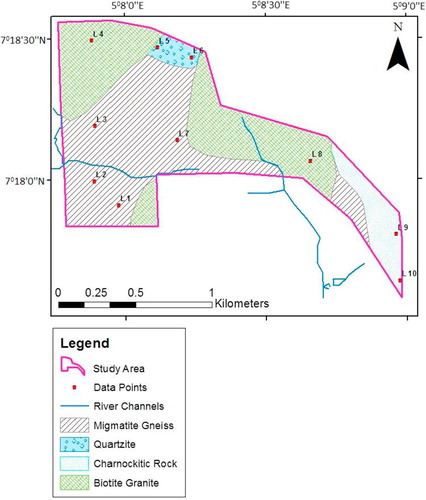Figures & data
Fig. 3 Geological map of the study area showing the sample locations (modified after CitationKareem, 1997).

Register now or learn more
Open access
Peer review under responsibility of National Research Institute of Astronomy and Geophysics.
Fig. 3 Geological map of the study area showing the sample locations (modified after CitationKareem, 1997).

People also read lists articles that other readers of this article have read.
Recommended articles lists articles that we recommend and is powered by our AI driven recommendation engine.
Cited by lists all citing articles based on Crossref citations.
Articles with the Crossref icon will open in a new tab.